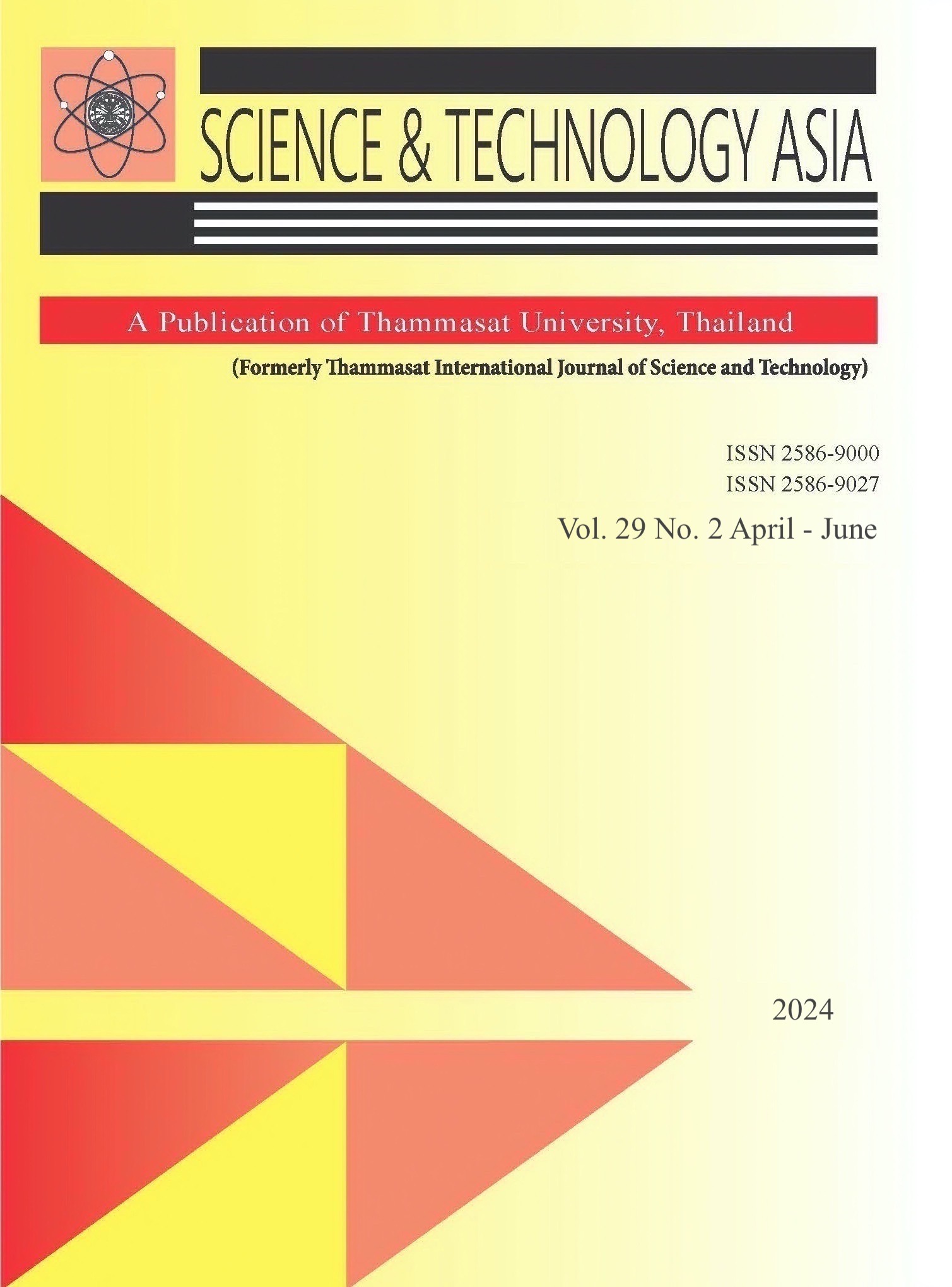Integrated Optimization Strategies for Enhanced Coffee Retail Store Efficiency with DEA Variants, Taguchi Signal to Noise, and Randomized Block Design
Main Article Content
Abstract
By integrating Data Envelopment Analysis (DEA) variants, Taguchi, and randomized block design techniques, this research addresses a substantial deficiency in the existing body of knowledge by evaluating the collective performance of coffee retail establishments situated on university campuses. The research considers undesirable output such as customer complaints by conducting an analysis of five operational inputs of OPEX, CAPEX, staff count, sitting capacity, and shop size with two desirable outputs of cup production and total income. DEA and its derivatives, super efficiency CCR and BCC were extremely efficient. The BCC infeasible efficiency score was improved by incorporating a modified super-efficiency BCC. The investigation further enhances the methodology for determining the optimal DecisionMaking Units (DMUs) among various DEA variations by incorporating Taguchi signal-to-noise and randomized block design as additional components. The most effective decision-making units (12, 9, and 5) demonstrated consistent and outstanding performance in all three DEA variants, as indicated by the results that succinctly outline the key results. Conversely, DMUs 2, 10, and 14 have been identified as prospective improvement areas.
Article Details

This work is licensed under a Creative Commons Attribution-NonCommercial-NoDerivatives 4.0 International License.
References
Banker R, Charnes A, Cooper WW, Swarts J, Thomas DA. An introduction to data envelopment analysis with some of its models and their uses. Research in Governmental and Nonprofit Accounting. 1989;5:125-63.
Tone K. A slacks-based measure of efficiency in data envelopment analysis. European Journal of Operational Research. 2001;130:498-509.
Despotis DK, Smirlis YG. Data envelopment analysis with imprecise data. European Journal of Operational Research. 2002;140:24-36.
Ramanathan R. An introduction to data envelopment analysis a tool for performance measurement. Sage Publications India Pvt Ltd; 2003.
Cooper WW, Seiford LM, Zhu J. Handbook on Data Envelopment Analysis. In: Richard SB. DEA Software Tools and Technology. Year Book; 2004. pp. 539-66.
Ray SC. Theory and Techniques for Economics and Operations Research. Cambridge: First published in print format; 2004.
Stancheva N, Angelova V. Measuring the efficiency of university libraries using data envelopment analysis. Conference on Professional Information Resources Prague; 2004.
Cook WD, Seiford LM. Data envelopment analysis (DEA) – thirty years. European Journal of Operational Research. 2009;192:1-17.
Ji YB, Lee C. Data envelopment analysis. The Stata Journal. 2010;10(2):267-80.
Liu JS, Lu LYY, Lu WM, Lin BJY. Data Envelopment analysis 1978-2010: A citation-based literature survey. Omega 2013;41(1):3-15.
Pasunon P, Tragantalerngsak S. An Evaluation of Agricultural Cooperatives Efficiency in Phetchaburi Province. Veridian E-Journal. 2013;2:811-35.
Iliyasu A, Mohamed ZA, Terano R. Data envelopment analysis models and software packages for academic purpose. Pertanika Journal of Scholarly Research Reviews. 2015;1(1):27-32.
Kouchaki-Penchah H, Nabavi-Pelesaraei A, O'Dwyer J, Sharifi M. Environmental management of tea production using joint of life cycle assessment and data envelopment analysis approaches. Environmental Progress and Sustainable Energy. 2017; 36(4):1116-22.
Chaiwuttisak P. Efficiency Assessment of Football Clubs in Thai Premier League Using the Data Envelopment Analysis (DEA) with Ranking Efficiency. Journal of Science and Technology. 2019;1:691-700.
Azar M, Zahra P, Azita J. Ranking of banks; risk reporting using data envelopment analysis. Advances in mathematical finance and applications.2021;6(4):695-715.
Ross PJ. Taguchi techniques for quality engineering: Second Edition. by the McGraw-Hill Companies. 1988;2:203-8.
Avkiran NK. Productivity analysis in the service sector with data envelopment analysis. In: Sarkis J. Preparing Your data for DEA. 3rd ed. 2006;2:115-23.
Gardziejczyk W, Zabicki P.Normalization and variant assessment methods in selection of road alignment variants – case study. Journal of civil engineering and management. 2017;23(4):510-23.
Toninelli R, Riccardi R, Cambini R. Data envelopment analysis: uncertainty, undesirable outputs and an application to world cement industry. Pisa: University of Pisa; 2012;44:24-30.
Gomes EG, Lins ME. Modelling undesirable outputs with zero sum gains data envelopment analysis models. Journal of the Operational Research Society; 2008;59(5):616-23.
You S, Yan H. A new approach in modelling undesirable output in DEA model. Journal of the Operational Research Society. 2011;62(12):2146-56.
Eyni M, Tohidi G, Mehrabeian S. Applying inverse DEA and cone constraint to sensitivity analysis of DMUs with undesirable inputs and outputs. Journal of Operational Research Society; 2017;68(1):34-40
Bhat ZUH, Naseer A, Dar QF. Ranking of football players by DEA-super efficiency model: an evidence from english premier league 2016/17 season. Turkish Online Journal of Qualitative Inquiry 2021;12(4):2009-19.
Zhu J. Super-efficiency and DEA sensitivity analysis. European Journal of Operational Research. 2001;129(2):443-55.
Lovell C, Rouse APB. Equivalent standard DEA models to provide superefficiency scores. Journal of the Operational Research Society.
;54(1):101-8.
Lee HS, Chu CW, Zhu J. Super-efficiency DEA in the presence of infeasibility. European Journal of Operational Research. 2011;212(1):141-7.
Cheng G, Zervopoulos P. A proxy approach to dealing with the infeasibility problem in super-efficiency data envelopment analysis. MPRA Paper; 2012.
Zhu J. Data envelopment analysis a handbook of models and methods. In: Chen Y, Du J. Super-efficiency in data envelopment analysis. International Series in Operations Research & Management Science. Year Book; 2015;221:392-3.
Sudasna-na-Ayudthya P, Luangpaiboon, P. Design and analysis of experiments. Top Publishing Co., Ltd; 2008. p. 95-7.
Ikeagwuani, CC, Nwonu, DC. Variable returns to scale DEA—Taguchi approach for ternary additives optimization in expansive soil subgrade enhancement. International Journal of Geo-Engineering. 2021; 12(1):20.
Koohathongsumrit, N., Luangpaiboon, P. An integrated FAHP–ZODP approach for strategic marketing information system project selection. Managerial and Decisio


